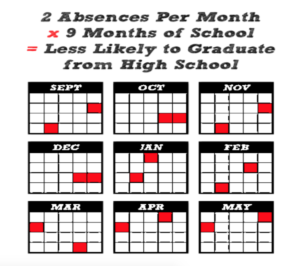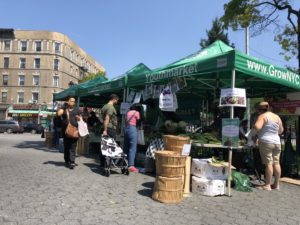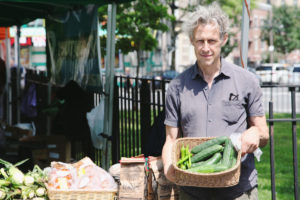One in three kids miss too much school in the South Bronx, and the rate climbs to one in two, as students reach their senior year, according to the New York City Department of Education. A new mentorship program aims to reduce chronic absenteeism by pairing caring adults, who check-in daily, with absent students.
The newly launched pilot project, initiated by Children’s Aid and South Bronx Rising Together in Morrisania, began in September.
The program recruits and trains success mentors as cheerleaders, advocates and motivators, who encourage their mentees to attend school. Each chronically absent student connects with the mentor. Along with meeting and greeting every morning, mentors reach out and engage the mentee’s family and call home immediately if the student misses school. They also meet with students one-on-one, or in small groups on a regular basis to track mentee’s attendance and improvements.
“They are not quite like mentors,” said Kevin, a senior year high-school student as a mentee in the program. “They are friends that you say ‘hi’ to every morning. It becomes our daily routine.”
Students are considered chronically absent if they miss at least 10% of school days—three days a month—for any reason. Citywide, the chronic absence rate is 25%, compared to 40% in the South Bronx.
“It adds up pretty quickly,” said Wenimo Okoya, director of Healthy and Ready to Learn at Children’s Health Fund. “Parents and teachers may not really think about the fact that a child is just missing several days of school and they really are, at the end of the year, chronically absent,” Okoya said.
Poverty is the driving factor behind poor attendance. The South Bronx is the poorest congressional district in the country. More than 80% of children are born into poverty, according to Abe Fernández, senior advisor of the South Bronx Rising Together. The community-wide, non-profit organization works with a network of neighborhood residents and program providers to build pathways of success for children and youth.
Children living in poverty are three times more likely to be chronically absent—and face the most harm because their community lacks the resources to make up for the lost learning in school.
Housing instability also leads to absenteeism. Students in homeless shelters are not only struggling with maintaining a place to sleep but also attending school. During elementary school, students who were homeless lived in at least two housing settings, transferred schools mid-year twice, and missed an average 88 days of school. This group of students had twice the risk of being suspended or held back a grade, and half the proficiency on their 5th-grade Math and English Language Arts assessments, according to The 2017 Atlas of Student Homelessness in New York City.
The first obstacle for homeless students in Morrisania is often simply being able to get to school because the shelters are too far away from children’s original schools. “Spending two hours on the way to school is apparently not practical,” said Fernández.
The success mentor model is much more integrated into the school environment according to Okoya. Mentors use attendance data as the primary factor to identify participants, collect and analyze data on a daily basis, and actively seek for school and family engagement.
“It requires mentors with deeper understandings of each student,” said Okoya. “Not just once a month or once a week, Success Mentors connect to mentees a minimum of 3 times a week, ideally, daily.”
Student attendance is significant from a continuous improvement point of view—it is one of the few data points that can be viewed daily, allowing individuals to see improvements as a regular behavior, according to Fernández.
“You try something new every day, what happened? Did it get better? Did it get worse? What did we learn from it? That’s a whole ongoing process,” he said.
By the end of 2020, Children’s Aid and South Bronx Rising Together want to reduce chronic absenteeism in Morrisania and Melrose from 40%—approximately 9,975 students—to 20%.
“The biggest challenge is bias. It’s just getting folks to see that this is a real thing and it’s a winnable thing,” said Jorge Blau, Program Director at Children’s Aid Society.
“When you are an adult, you show up to work. When you are a child, you should show up to school. This is a checkbox, the first step to success,” he said.













